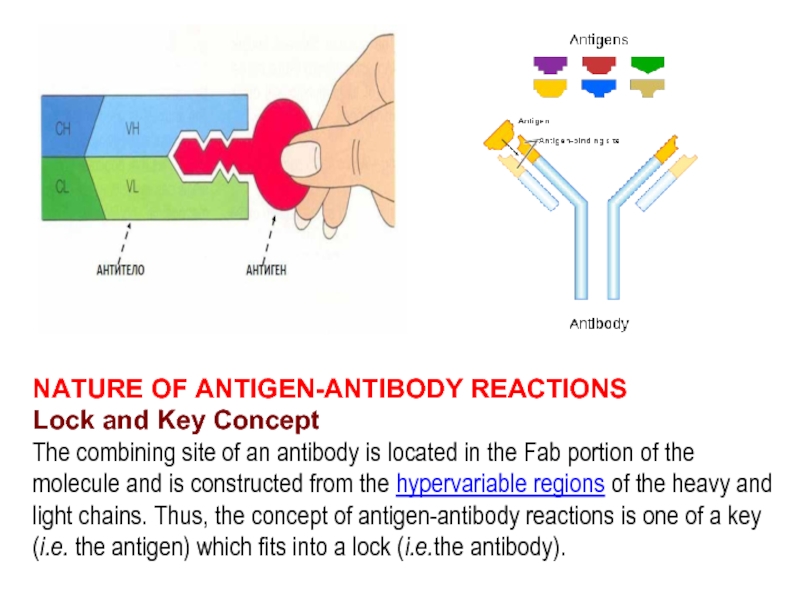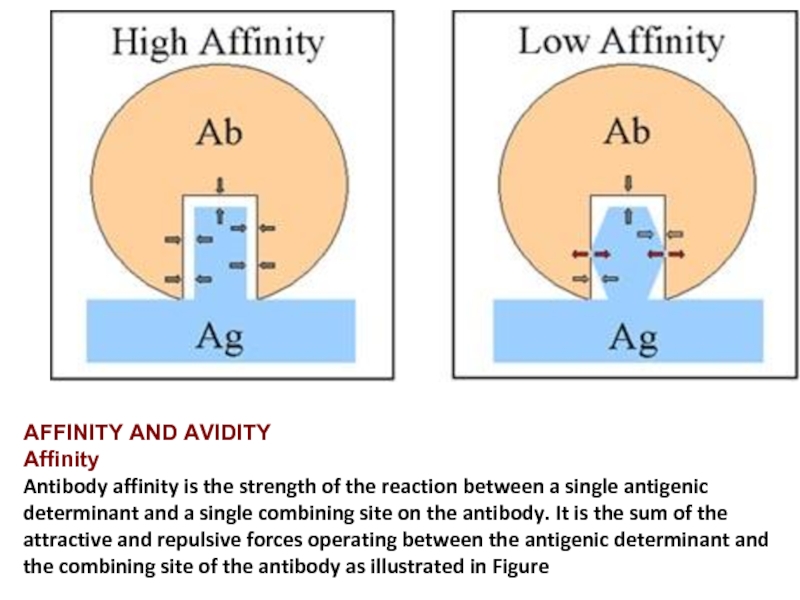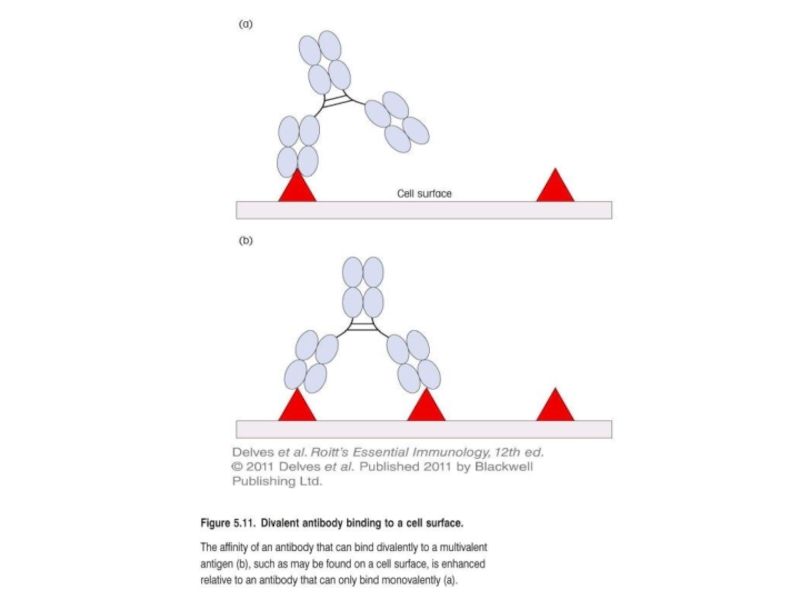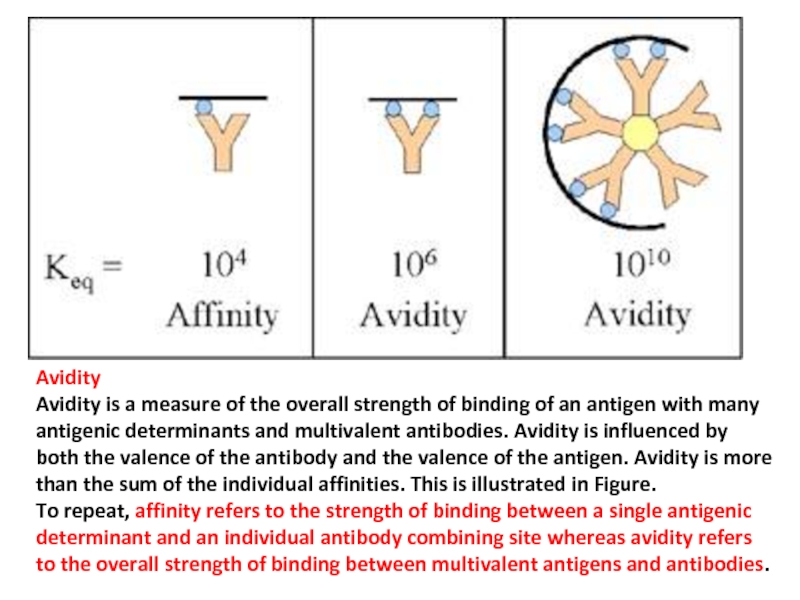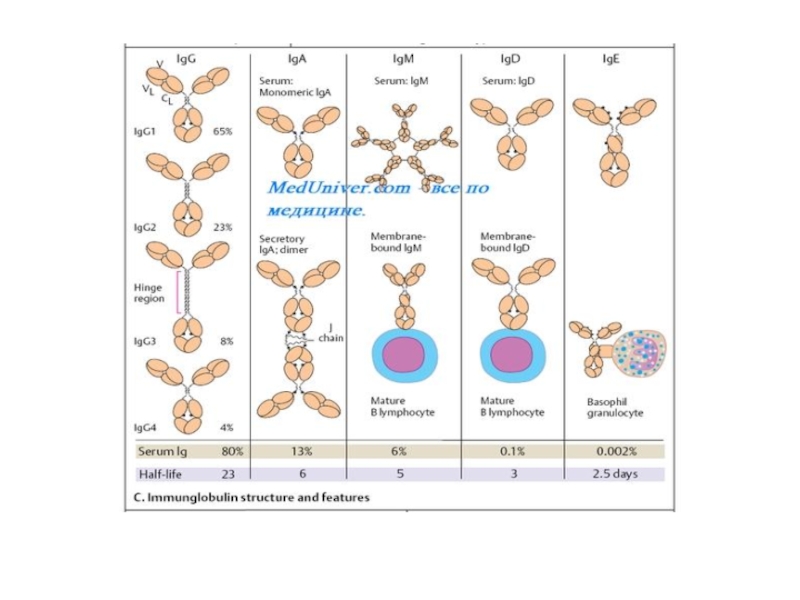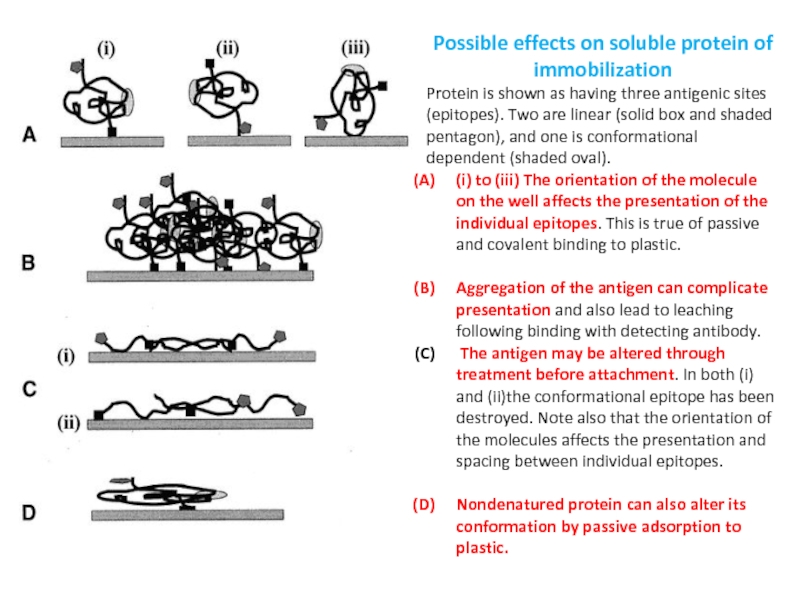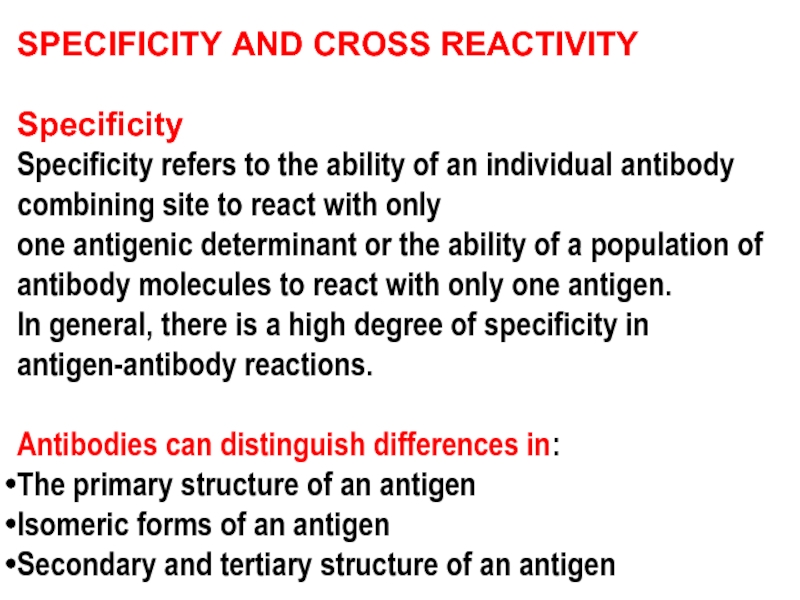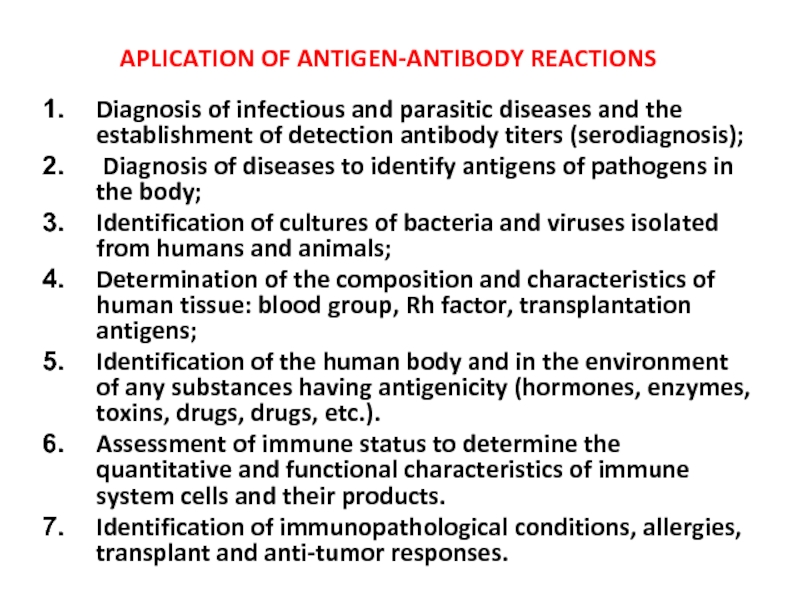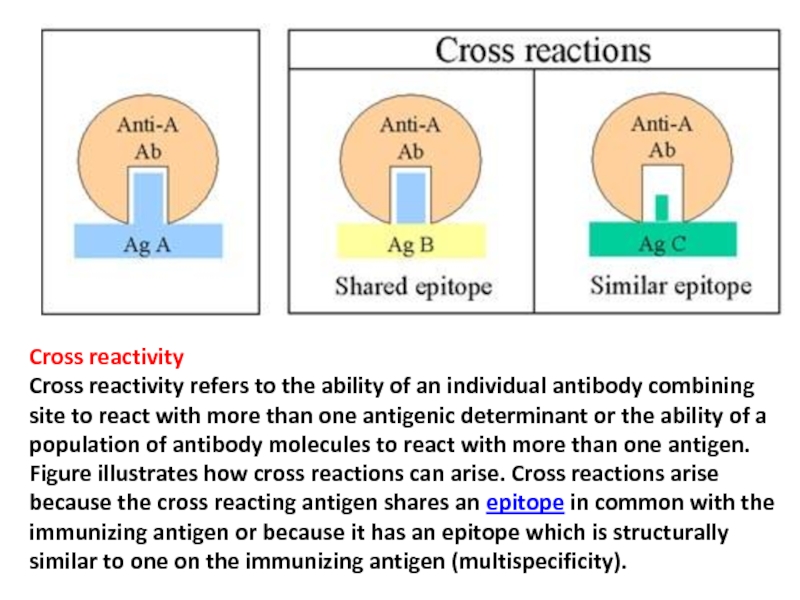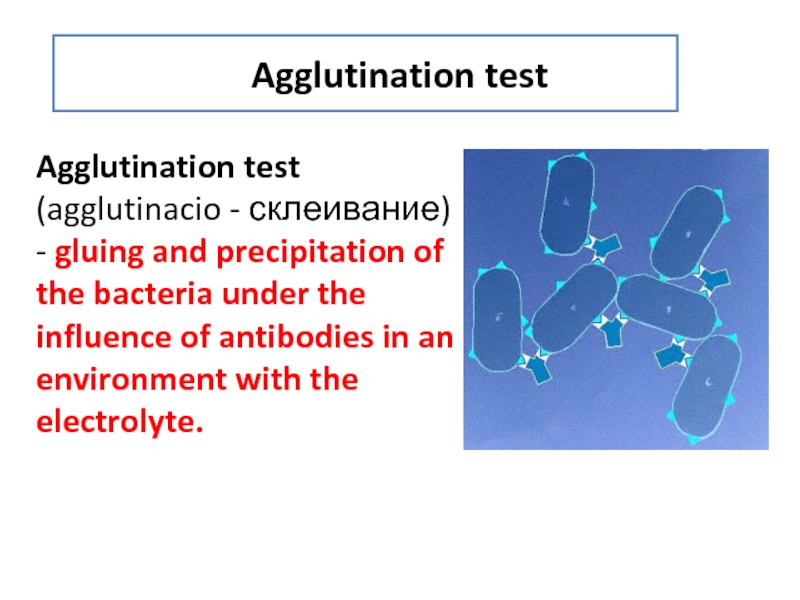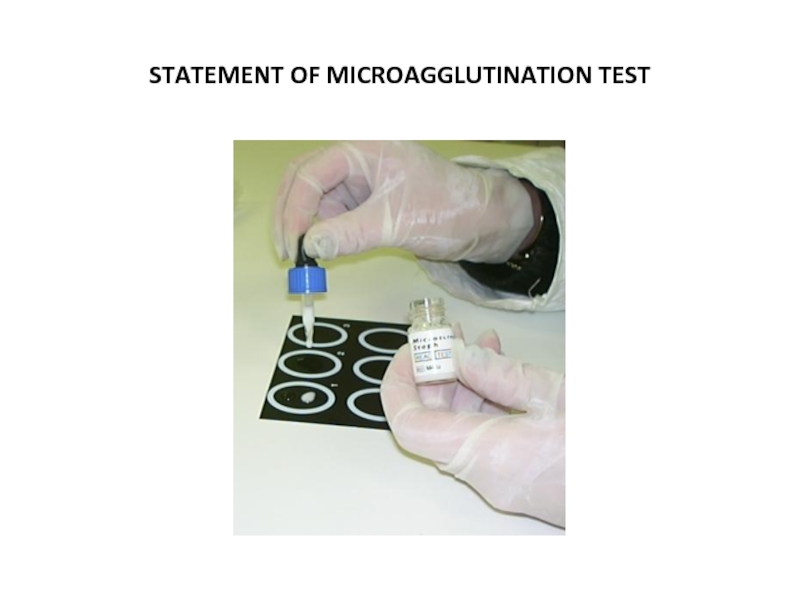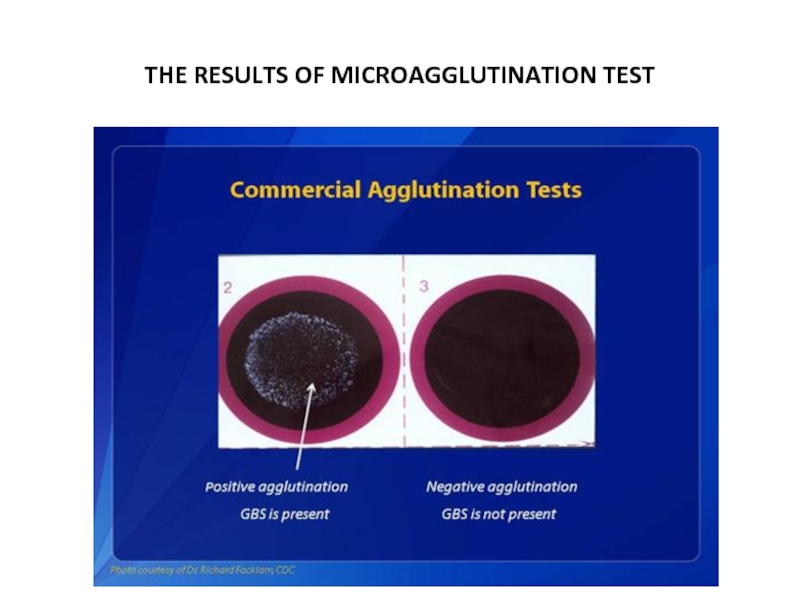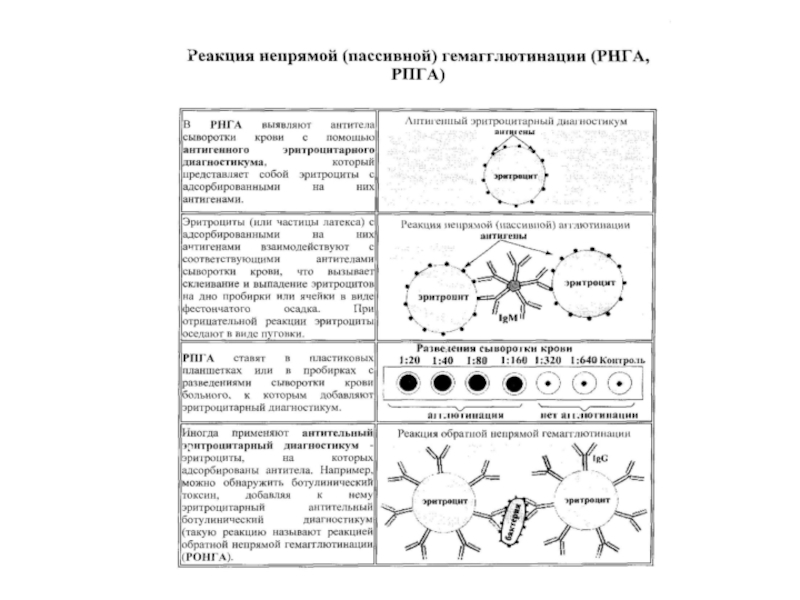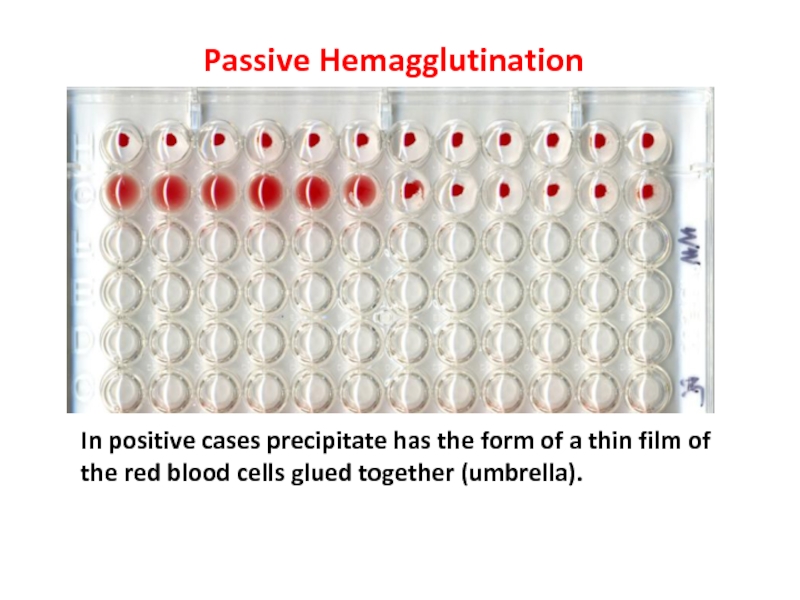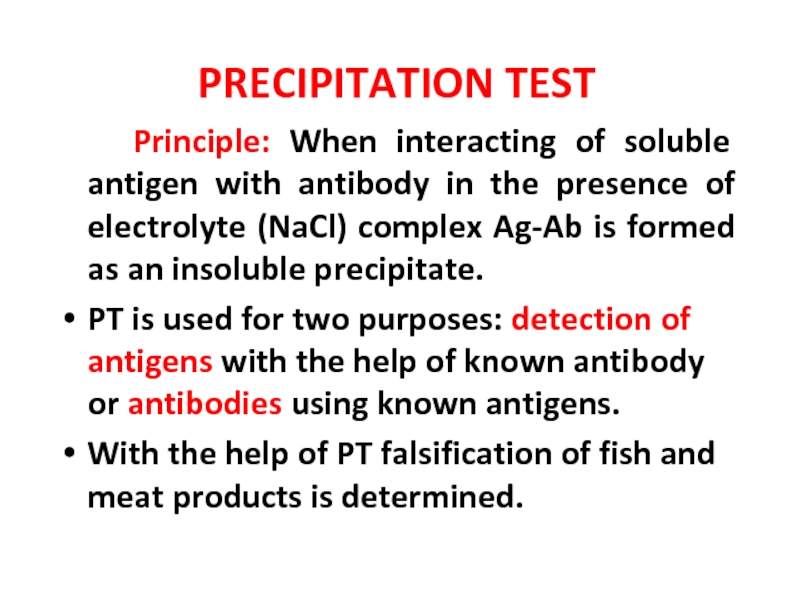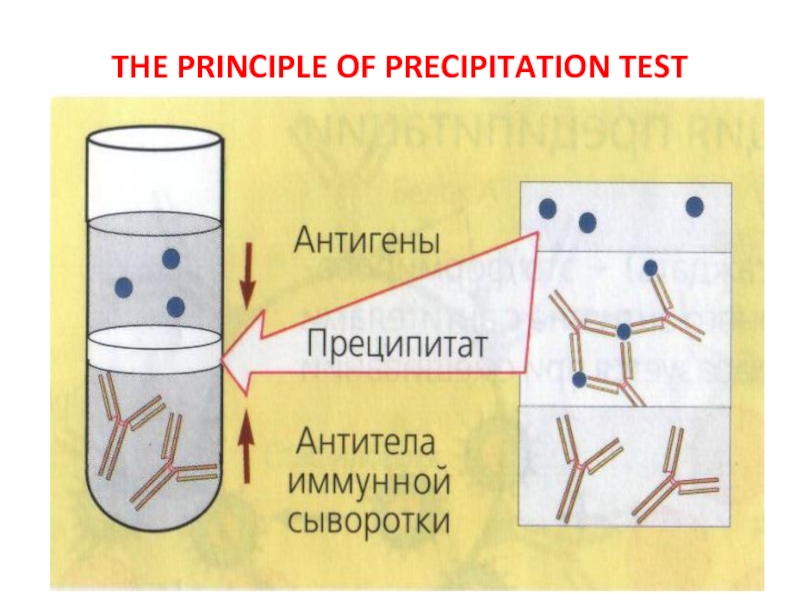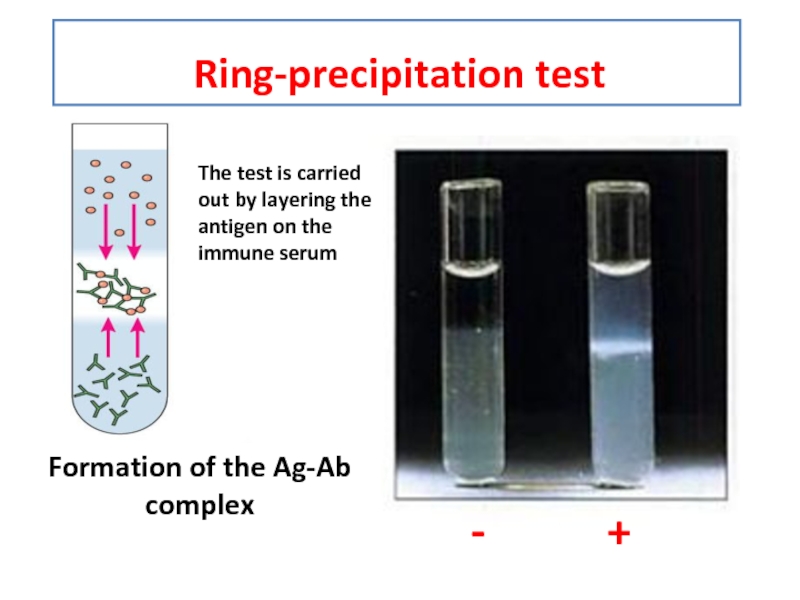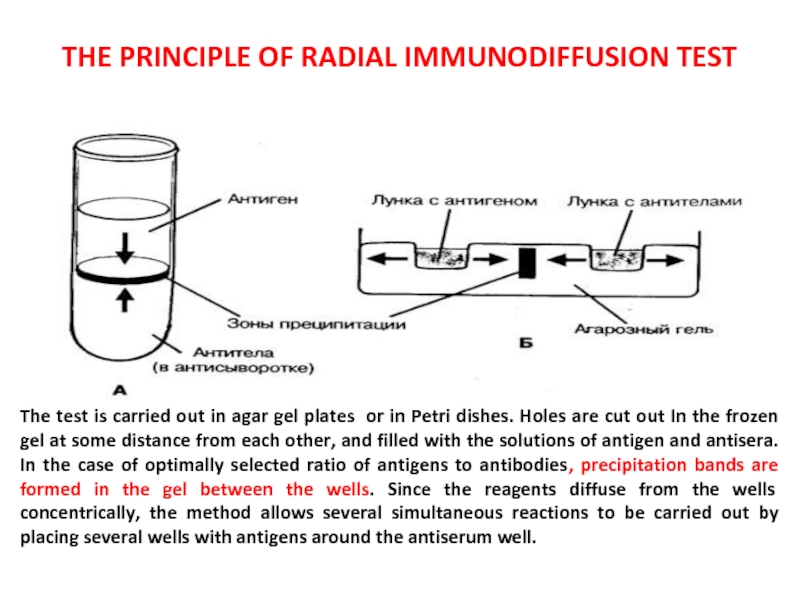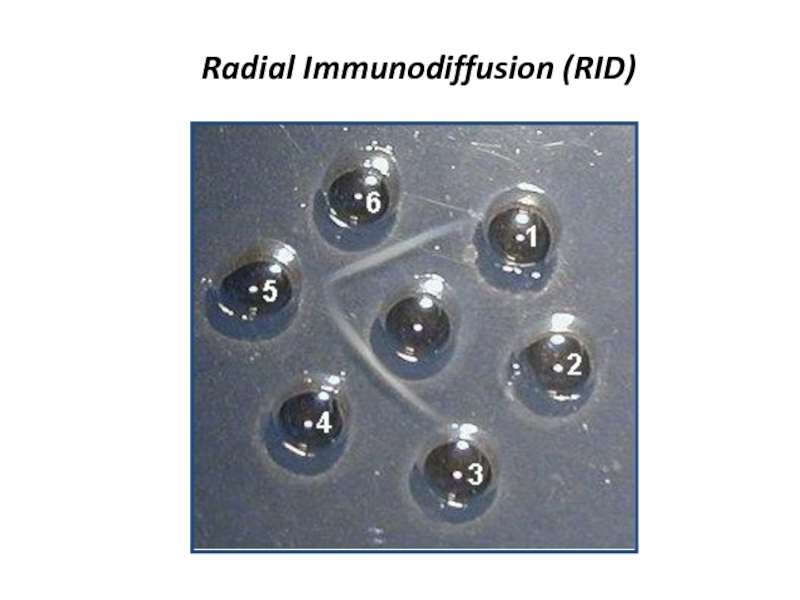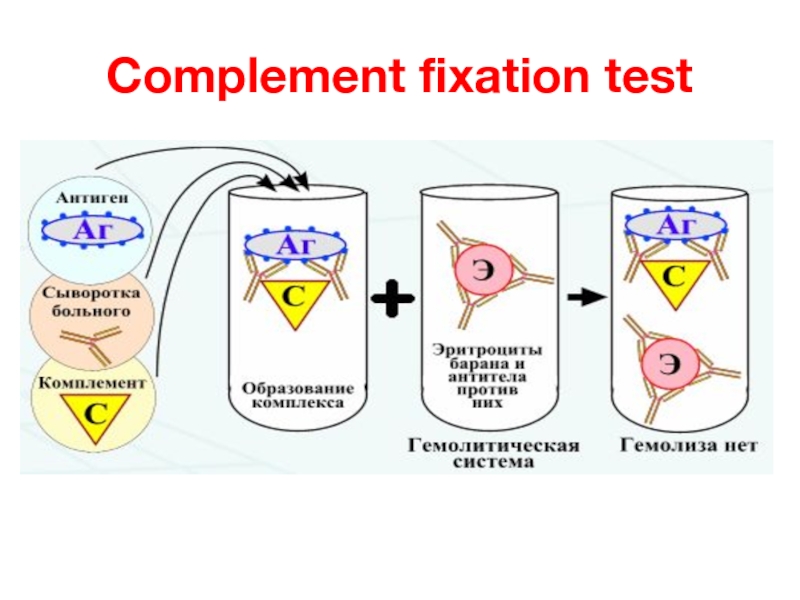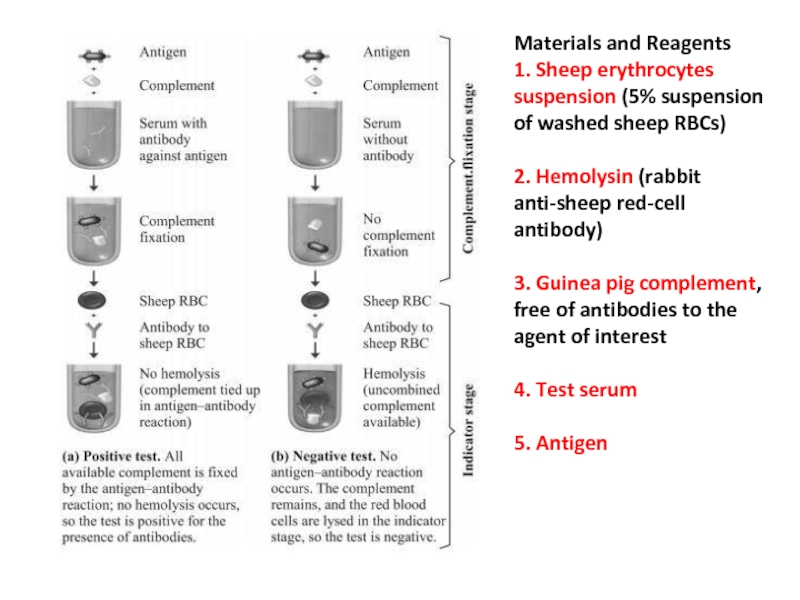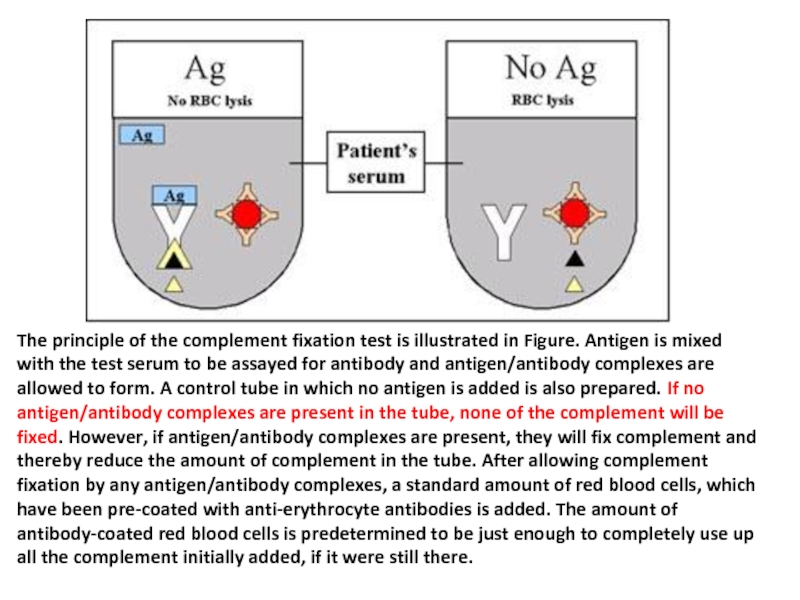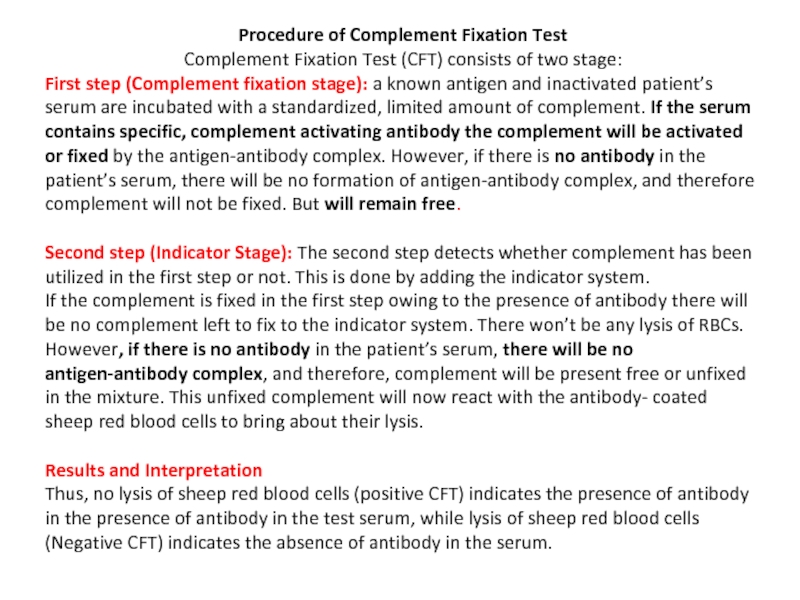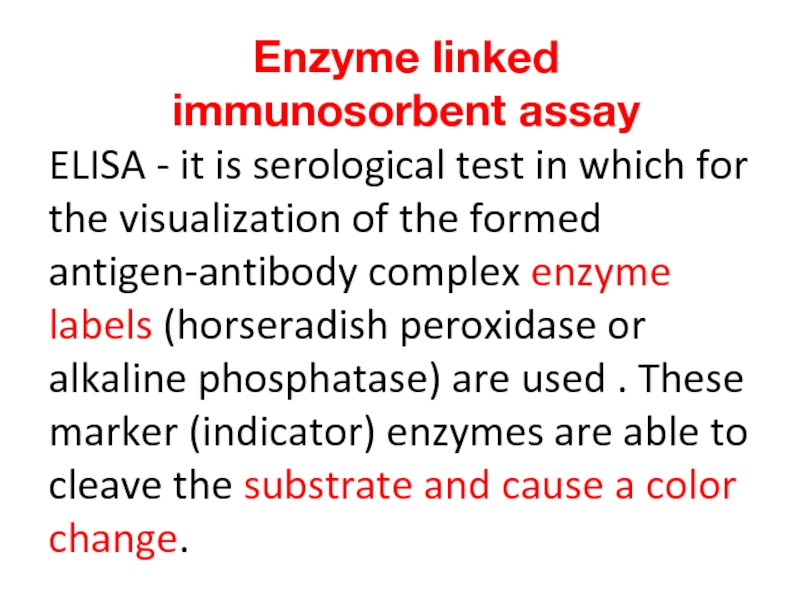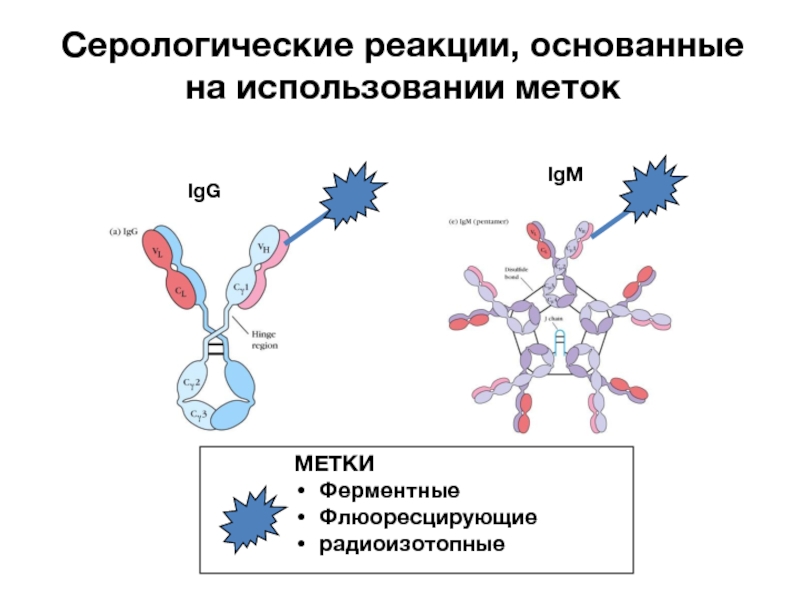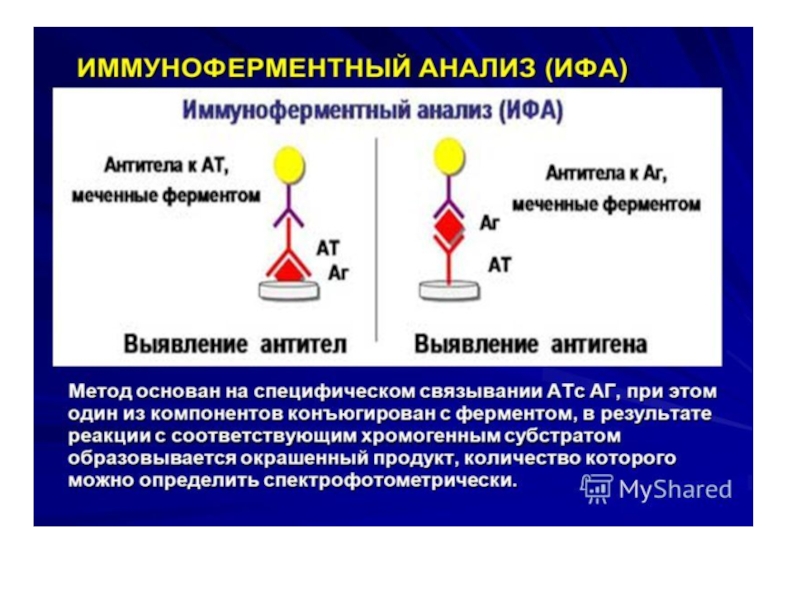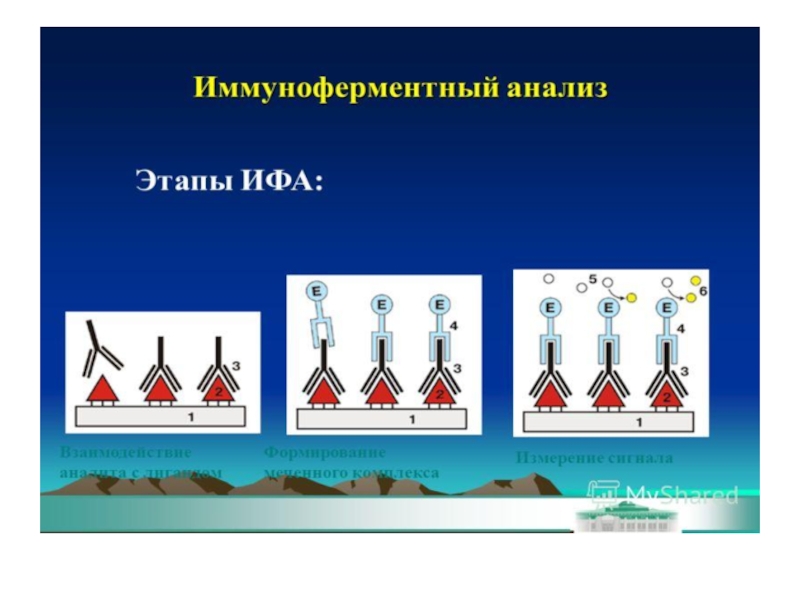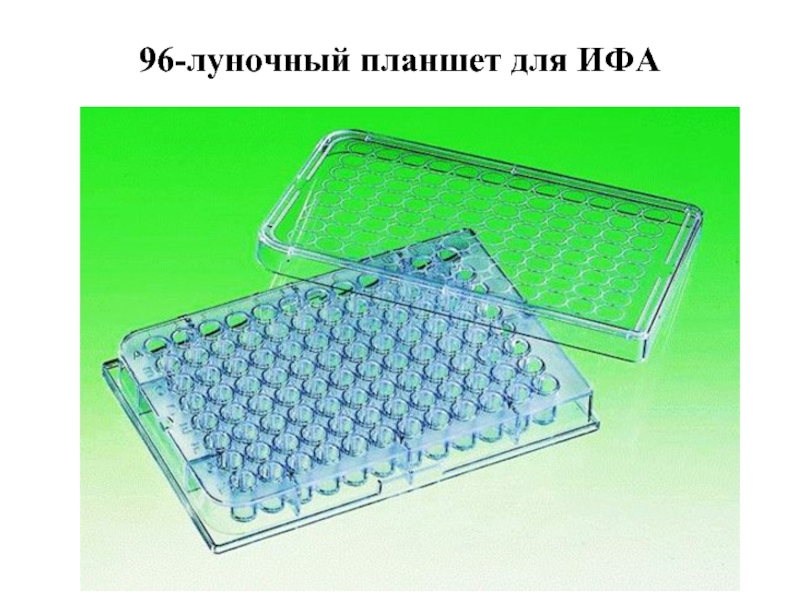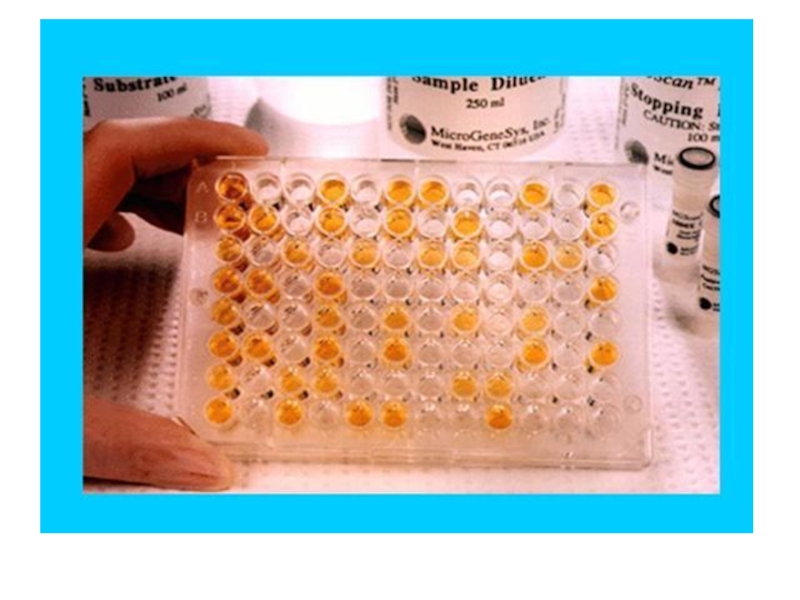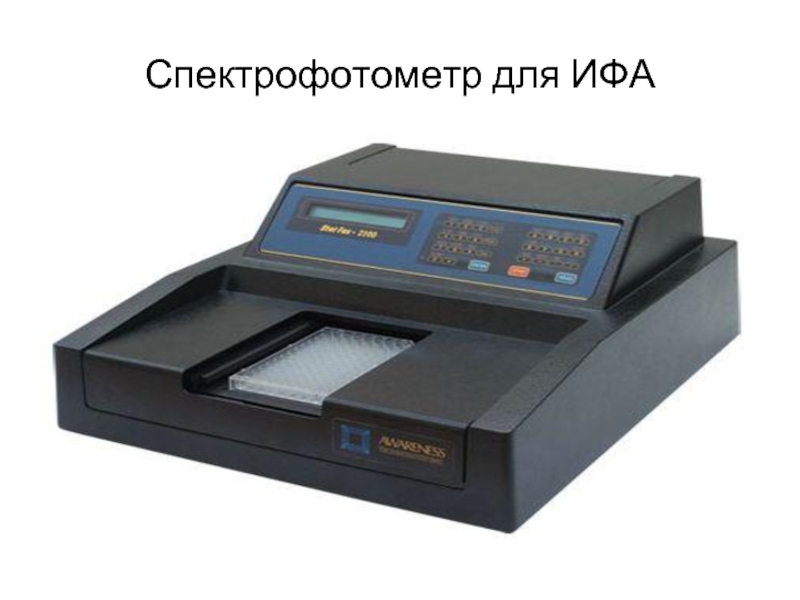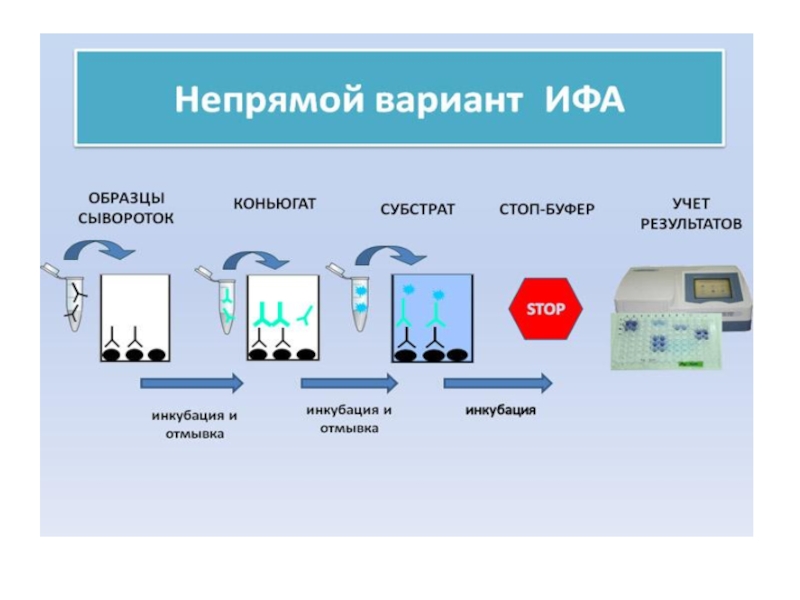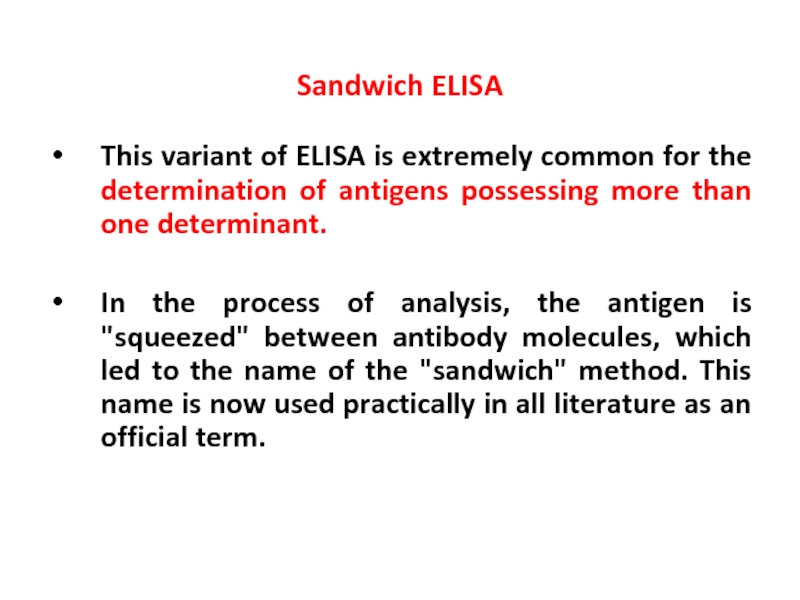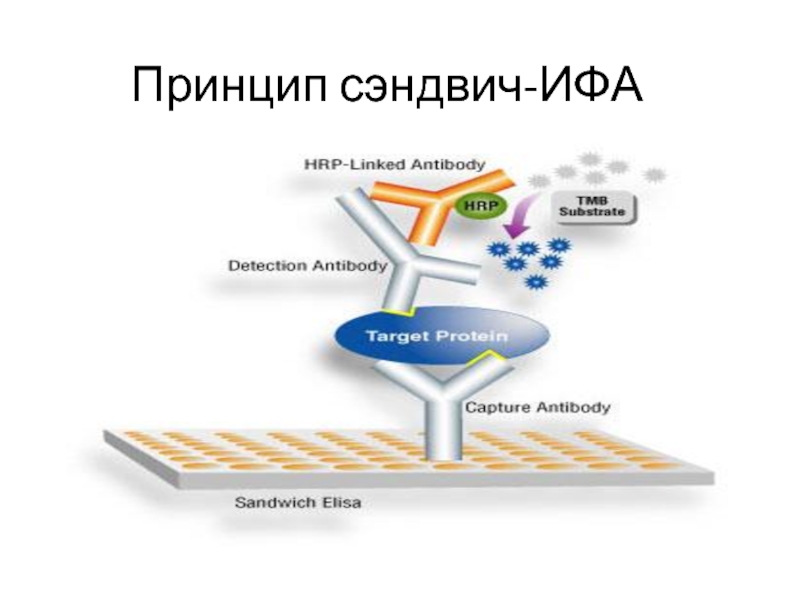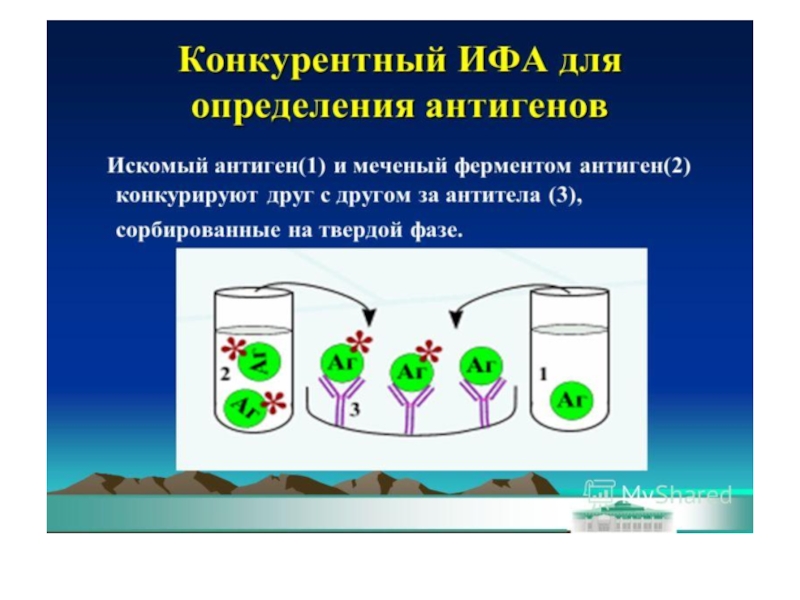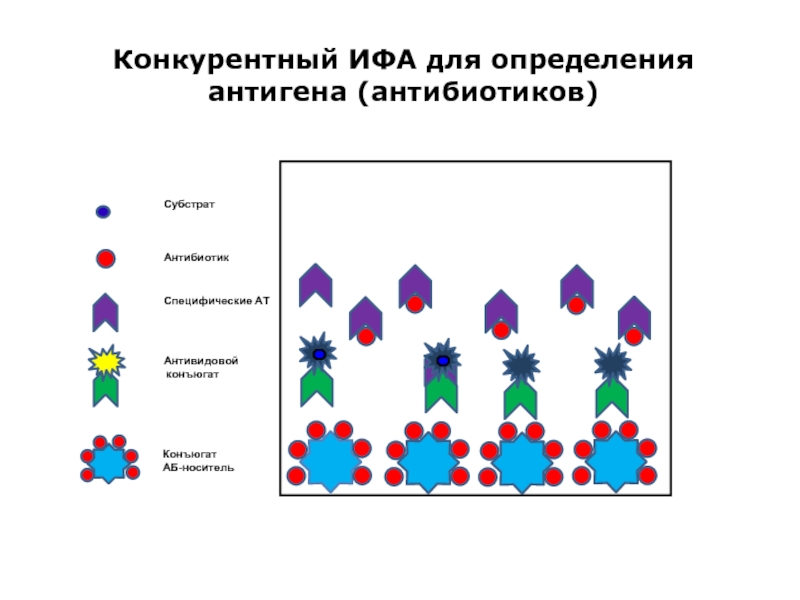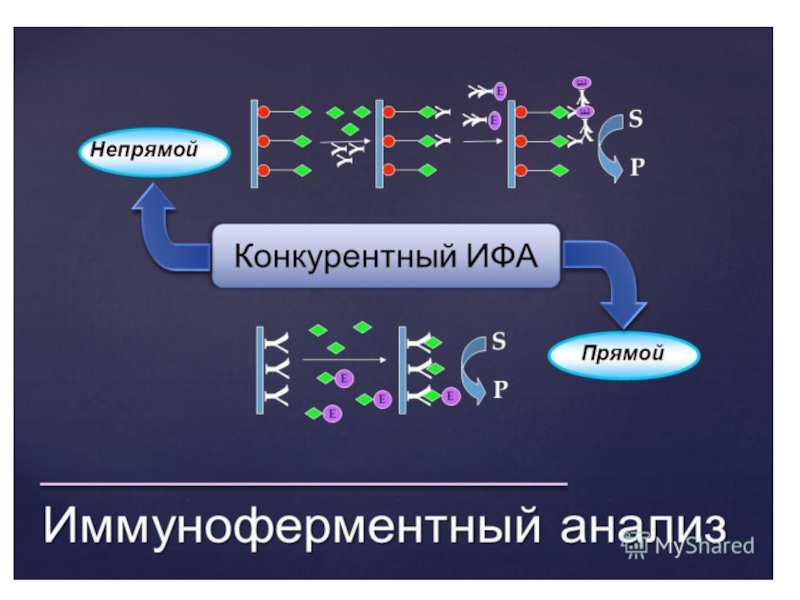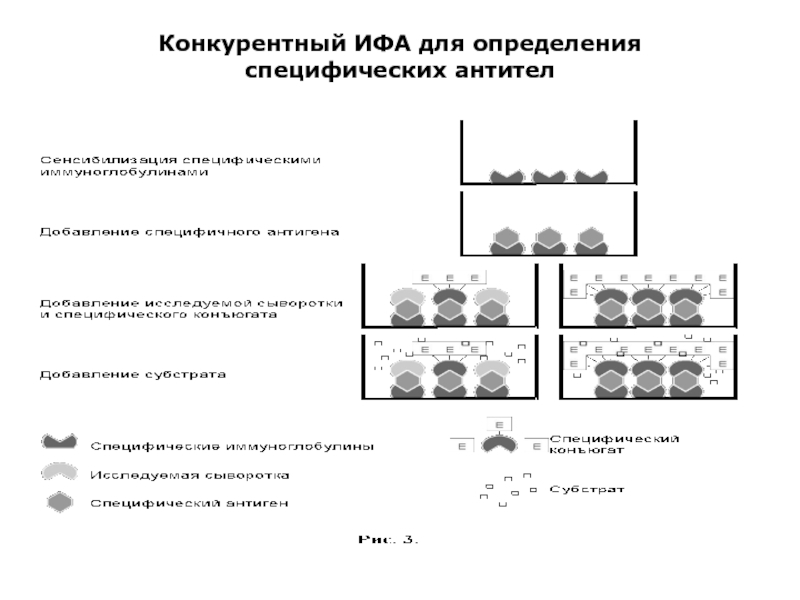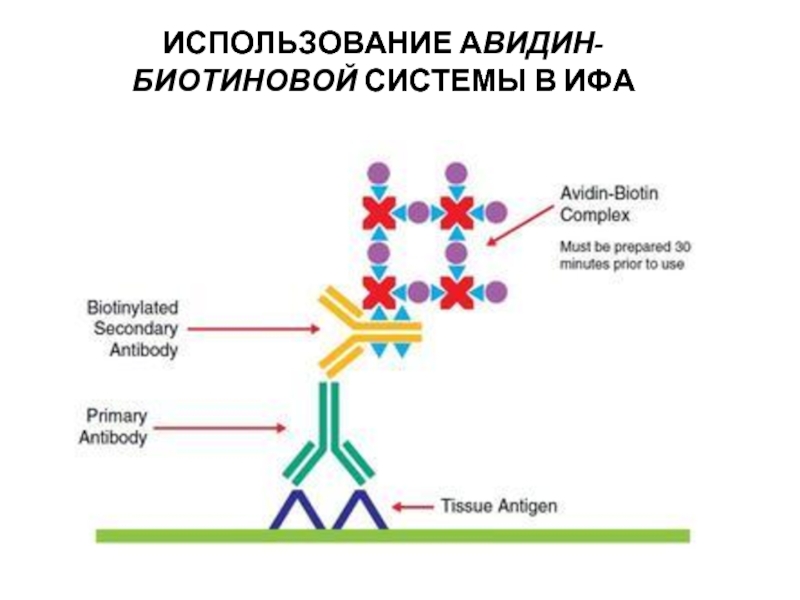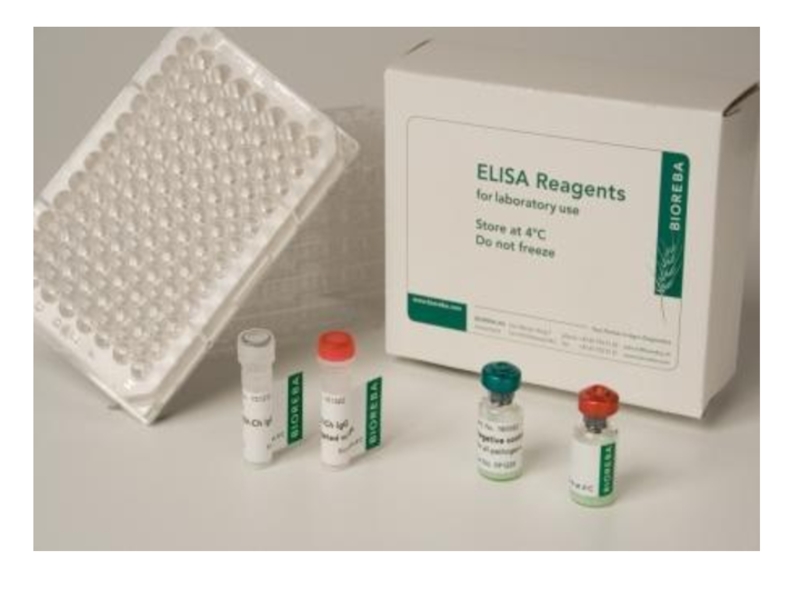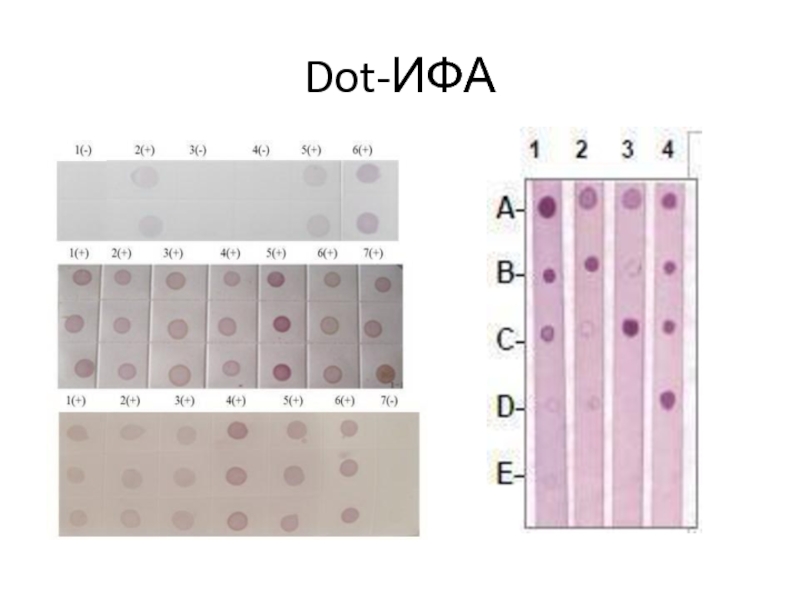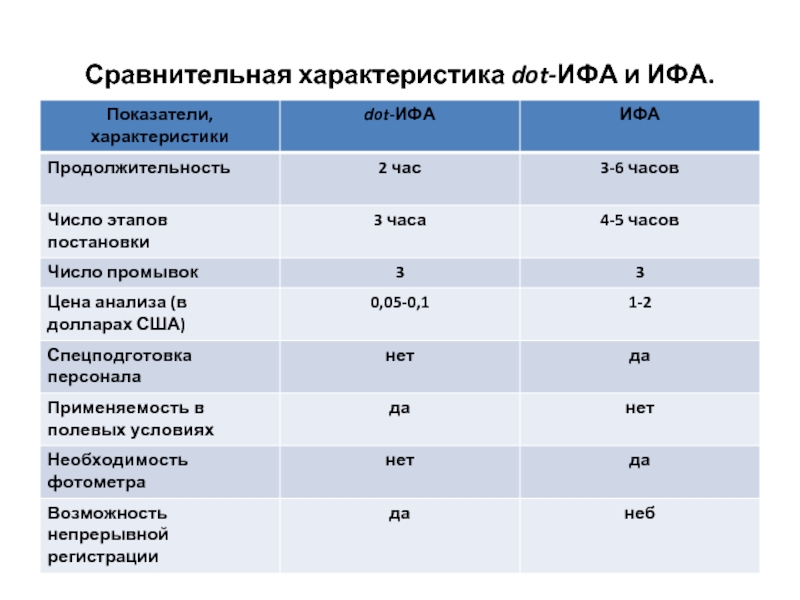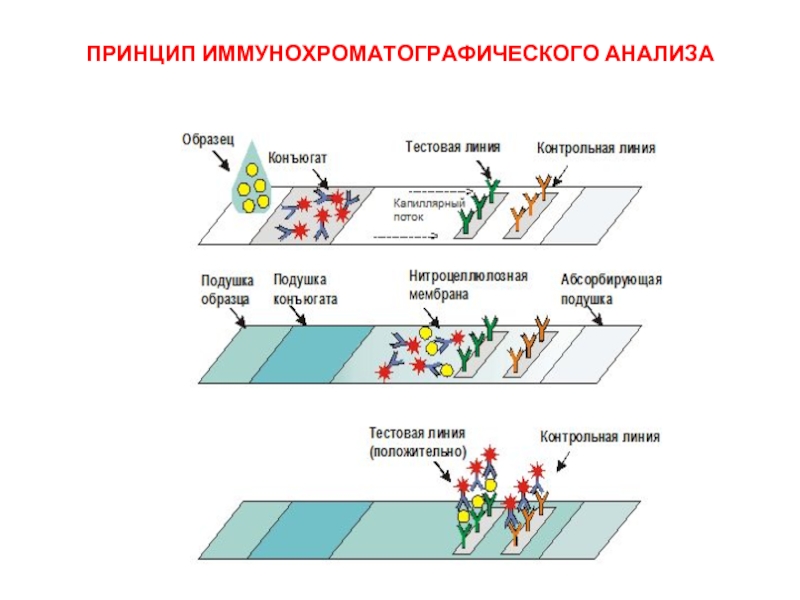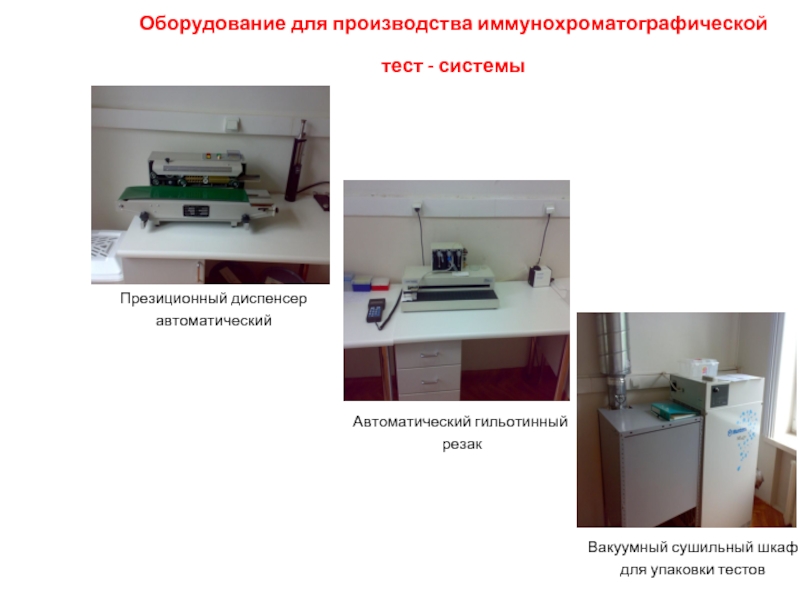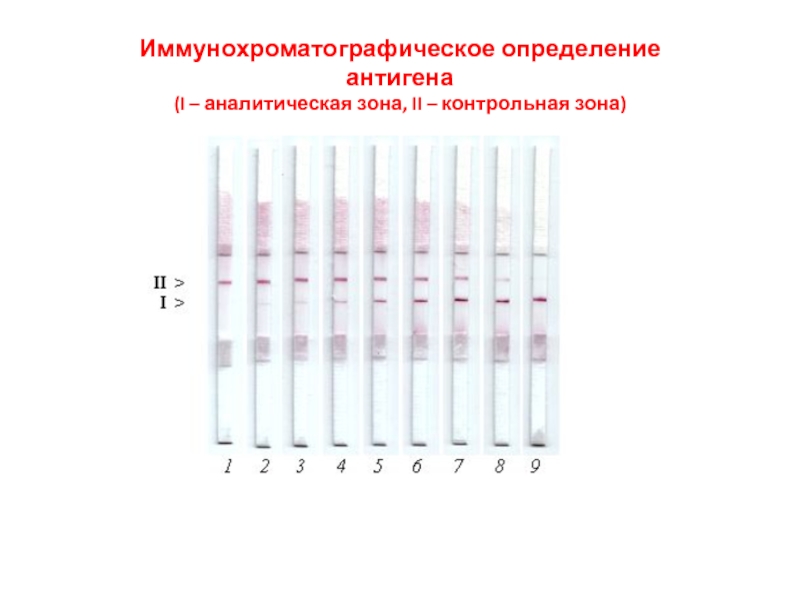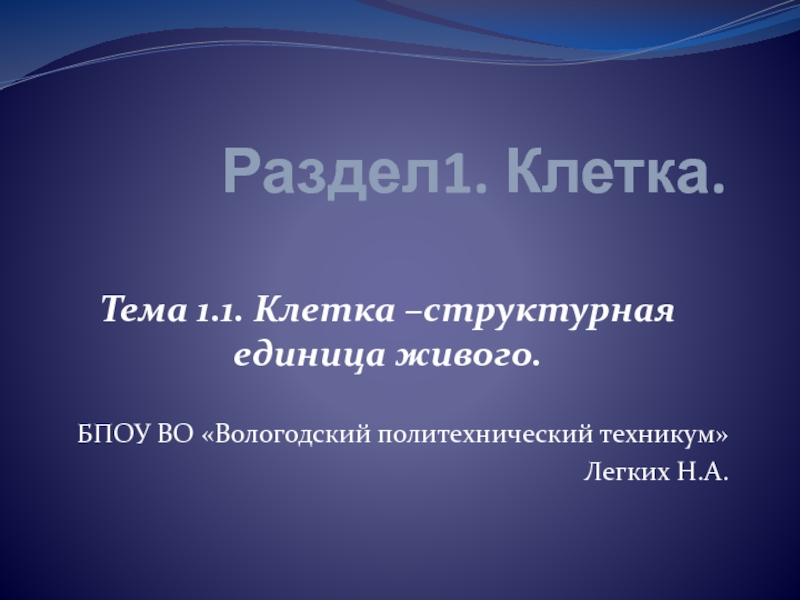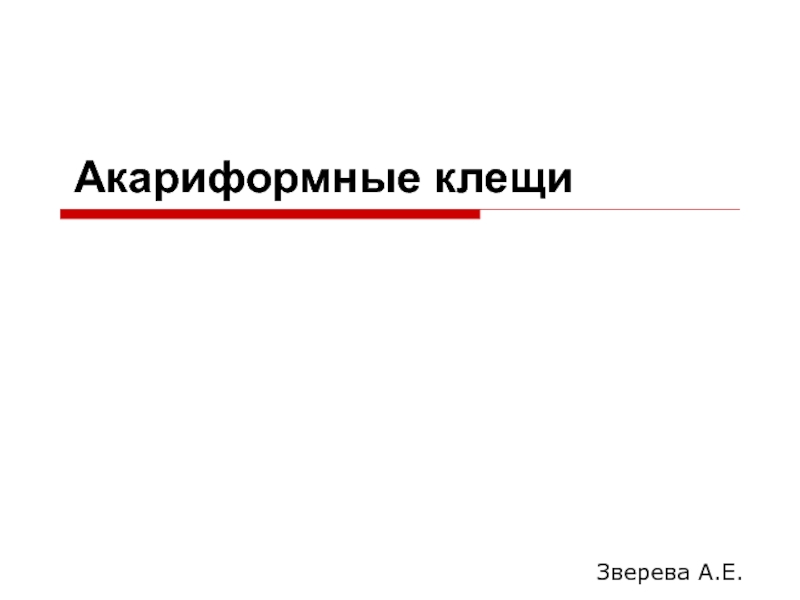- Главная
- Разное
- Дизайн
- Бизнес и предпринимательство
- Аналитика
- Образование
- Развлечения
- Красота и здоровье
- Финансы
- Государство
- Путешествия
- Спорт
- Недвижимость
- Армия
- Графика
- Культурология
- Еда и кулинария
- Лингвистика
- Английский язык
- Астрономия
- Алгебра
- Биология
- География
- Детские презентации
- Информатика
- История
- Литература
- Маркетинг
- Математика
- Медицина
- Менеджмент
- Музыка
- МХК
- Немецкий язык
- ОБЖ
- Обществознание
- Окружающий мир
- Педагогика
- Русский язык
- Технология
- Физика
- Философия
- Химия
- Шаблоны, картинки для презентаций
- Экология
- Экономика
- Юриспруденция
Antigen-antibody reactions and selected tests презентация
Содержание
- 1. Antigen-antibody reactions and selected tests
- 2. NATURE OF ANTIGEN-ANTIBODY REACTIONS Lock and Key
- 3. AFFINITY AND AVIDITY Affinity Antibody affinity is
- 5. Avidity Avidity is a measure of the
- 7. Possible effects on soluble protein of immobilization
- 8. SPECIFICITY AND CROSS REACTIVITY Specificity Specificity
- 9. Diagnosis of infectious and parasitic diseases
- 10. Cross reactivity Cross reactivity refers to the
- 11. Agglutination test Agglutination test (agglutinacio - склеивание)
- 12. STATEMENT OF MICROAGGLUTINATION TEST
- 13. THE RESULTS OF MICROAGGLUTINATION TEST
- 15. In positive cases precipitate has
- 16. PRECIPITATION TEST Principle: When interacting
- 17. THE PRINCIPLE OF PRECIPITATION TEST
- 18. Ring-precipitation test Formation of the Ag-Ab complex
- 19. THE PRINCIPLE OF RADIAL IMMUNODIFFUSION TEST The
- 20. Radial Immunodiffusion (RID)
- 21. Complement fixation test
- 22. Materials and Reagents 1. Sheep erythrocytes suspension (5%
- 23. The principle of the complement fixation test
- 24. Procedure of Complement Fixation Test Complement Fixation
- 25. Enzyme linked immunosorbent assay ELISA - it
- 26. IgG IgM Серологические реакции, основанные на использовании
- 29. 96-луночный планшет для ИФА
- 31. Спектрофотометр для ИФА
- 32. ПРИНЦИП НЕПРЯМОГО ИФА
- 34. This variant of ELISA is extremely
- 35. Принцип сэндвич-ИФА
- 37. Конкурентный ИФА для определения антигена (антибиотиков)
- 39. Конкурентный ИФА для определения специфических антител
- 40. ИСПОЛЬЗОВАНИЕ АВИДИН-БИОТИНОВОЙ СИСТЕМЫ В ИФА
- 42. Dot-ИФА
- 43. Сравнительная характеристика dot-ИФА и ИФА.
- 44. ПРИНЦИП ИММУНОХРОМАТОГРАФИЧЕСКОГО АНАЛИЗА
- 45. Оборудование для производства иммунохроматографической тест - системы
- 46. Иммунохроматографическое определение антигена (I – аналитическая зона, II – контрольная зона)
- 47. РЕЗУЛЬТАТЫ ИХА-ТЕСТА
Слайд 1ANTIGEN-ANTIBODY REACTIONS
AND SELECTED TESTS
TEACHING OBJECTIVES
1.To describe the nature of Ag-Ab reactions
2.To
Слайд 2NATURE OF ANTIGEN-ANTIBODY REACTIONS
Lock and Key Concept
The combining site of an
Слайд 3AFFINITY AND AVIDITY
Affinity
Antibody affinity is the strength of the reaction between
Слайд 5Avidity
Avidity is a measure of the overall strength of binding of
To repeat, affinity refers to the strength of binding between a single antigenic determinant and an individual antibody combining site whereas avidity refers to the overall strength of binding between multivalent antigens and antibodies.
Слайд 7Possible effects on soluble protein of immobilization
Protein is shown as
(i) to (iii) The orientation of the molecule on the well affects the presentation of the individual epitopes. This is true of passive and covalent binding to plastic.
Aggregation of the antigen can complicate presentation and also lead to leaching following binding with detecting antibody.
The antigen may be altered through treatment before attachment. In both (i) and (ii)the conformational epitope has been destroyed. Note also that the orientation of the molecules affects the presentation and spacing between individual epitopes.
Nondenatured protein can also alter its conformation by passive adsorption to plastic.
Слайд 8SPECIFICITY AND CROSS REACTIVITY
Specificity
Specificity refers to the ability of an individual
one antigenic determinant or the ability of a population of antibody molecules to react with only one antigen.
In general, there is a high degree of specificity in antigen-antibody reactions.
Antibodies can distinguish differences in:
The primary structure of an antigen
Isomeric forms of an antigen
Secondary and tertiary structure of an antigen
Слайд 9
Diagnosis of infectious and parasitic diseases and the establishment of detection
Diagnosis of diseases to identify antigens of pathogens in the body;
Identification of cultures of bacteria and viruses isolated from humans and animals;
Determination of the composition and characteristics of human tissue: blood group, Rh factor, transplantation antigens;
Identification of the human body and in the environment of any substances having antigenicity (hormones, enzymes, toxins, drugs, drugs, etc.).
Assessment of immune status to determine the quantitative and functional characteristics of immune system cells and their products.
Identification of immunopathological conditions, allergies, transplant and anti-tumor responses.
APLICATION OF ANTIGEN-ANTIBODY REACTIONS
Слайд 10Cross reactivity
Cross reactivity refers to the ability of an individual antibody
Слайд 11Agglutination test
Agglutination test (agglutinacio - склеивание) - gluing and precipitation of
Слайд 15
In positive cases precipitate has the form of a thin film
Passive Hemagglutination
Слайд 16PRECIPITATION TEST
Principle: When interacting of soluble antigen with antibody
PT is used for two purposes: detection of antigens with the help of known antibody or antibodies using known antigens.
With the help of PT falsification of fish and meat products is determined.
Слайд 18Ring-precipitation test
Formation of the Ag-Ab complex
-
The test is carried out by layering the antigen on the immune serum
Слайд 19THE PRINCIPLE OF RADIAL IMMUNODIFFUSION TEST
The test is carried out in
Слайд 22Materials and Reagents
1. Sheep erythrocytes suspension (5% suspension of washed sheep RBCs)
2.
3. Guinea pig complement, free of antibodies to the agent of interest
4. Test serum
5. Antigen
Слайд 23The principle of the complement fixation test is illustrated in Figure.
Слайд 24Procedure of Complement Fixation Test
Complement Fixation Test (CFT) consists of two
First step (Complement fixation stage): a known antigen and inactivated patient’s serum are incubated with a standardized, limited amount of complement. If the serum contains specific, complement activating antibody the complement will be activated or fixed by the antigen-antibody complex. However, if there is no antibody in the patient’s serum, there will be no formation of antigen-antibody complex, and therefore complement will not be fixed. But will remain free.
Second step (Indicator Stage): The second step detects whether complement has been utilized in the first step or not. This is done by adding the indicator system.
If the complement is fixed in the first step owing to the presence of antibody there will be no complement left to fix to the indicator system. There won’t be any lysis of RBCs.
However, if there is no antibody in the patient’s serum, there will be no antigen-antibody complex, and therefore, complement will be present free or unfixed in the mixture. This unfixed complement will now react with the antibody- coated sheep red blood cells to bring about their lysis.
Results and Interpretation
Thus, no lysis of sheep red blood cells (positive CFT) indicates the presence of antibody in the presence of antibody in the test serum, while lysis of sheep red blood cells (Negative CFT) indicates the absence of antibody in the serum.
Слайд 25Enzyme linked immunosorbent assay
ELISA - it is serological test in which
Слайд 26IgG
IgM
Серологические реакции, основанные на использовании меток
МЕТКИ
Ферментные
Флюоресцирующие
радиоизотопные
Слайд 34
This variant of ELISA is extremely common for the determination of
In the process of analysis, the antigen is "squeezed" between antibody molecules, which led to the name of the "sandwich" method. This name is now used practically in all literature as an official term.
Sandwich ELISA
Слайд 37Конкурентный ИФА для определения антигена (антибиотиков)
Конъюгат
АБ-носитель
Субстрат
Антибиотик
Специфические АТ
Антивидовой
конъюгат
Слайд 45Оборудование для производства иммунохроматографической тест - системы
Презиционный диспенсер
автоматический
Автоматический
резак
Вакуумный сушильный шкаф
для упаковки тестов

